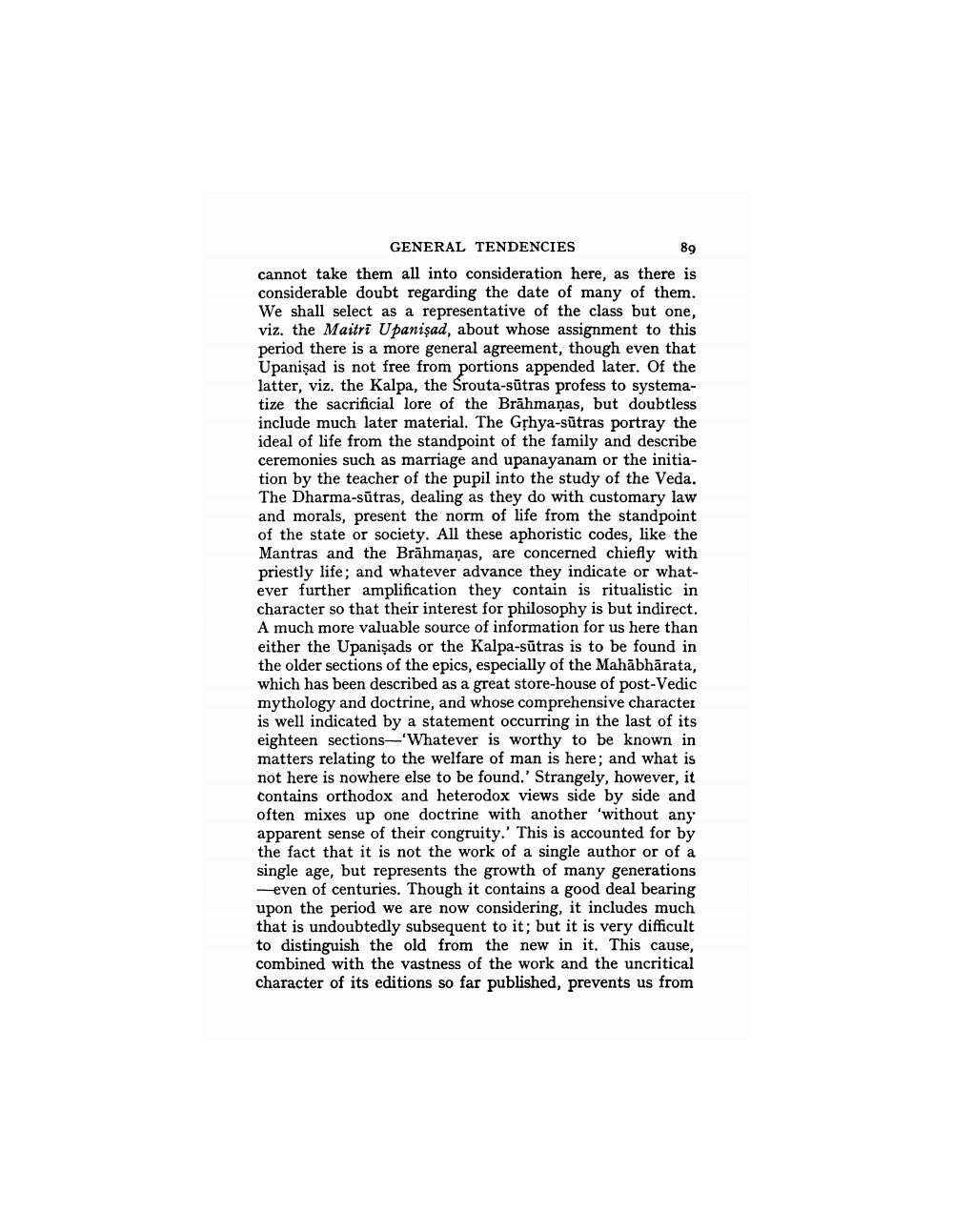________________
89
GENERAL TENDENCIES
cannot take them all into consideration here, as there is considerable doubt regarding the date of many of them. We shall select as a representative of the class but one, viz. the Maitri Upanisad, about whose assignment to this period there is a more general agreement, though even that Upanisad is not free from portions appended later. Of the latter, viz. the Kalpa, the Śrouta-sūtras profess to systematize the sacrificial lore of the Brahmaņas, but doubtless include much later material. The Gṛhya-sutras portray the ideal of life from the standpoint of the family and describe ceremonies such as marriage and upanayanam or the initiation by the teacher of the pupil into the study of the Veda. The Dharma-sutras, dealing as they do with customary law and morals, present the norm of life from the standpoint of the state or society. All these aphoristic codes, like the Mantras and the Brahmaņas, are concerned chiefly with priestly life; and whatever advance they indicate or whatever further amplification they contain is ritualistic in character so that their interest for philosophy is but indirect. A much more valuable source of information for us here than either the Upanisads or the Kalpa-sutras is to be found in the older sections of the epics, especially of the Mahābhārata, which has been described as a great store-house of post-Vedic mythology and doctrine, and whose comprehensive character is well indicated by a statement occurring in the last of its eighteen sections-'Whatever is worthy to be known in matters relating to the welfare of man is here; and what is not here is nowhere else to be found.' Strangely, however, it contains orthodox and heterodox views side by side and often mixes up one doctrine with another 'without any apparent sense of their congruity.' This is accounted for by the fact that it is not the work of a single author or of a single age, but represents the growth of many generations -even of centuries. Though it contains a good deal bearing upon the period we are now considering, it includes much that is undoubtedly subsequent to it; but it is very difficult to distinguish the old from the new in it. This cause, combined with the vastness of the work and the uncritical character of its editions so far published, prevents us from




